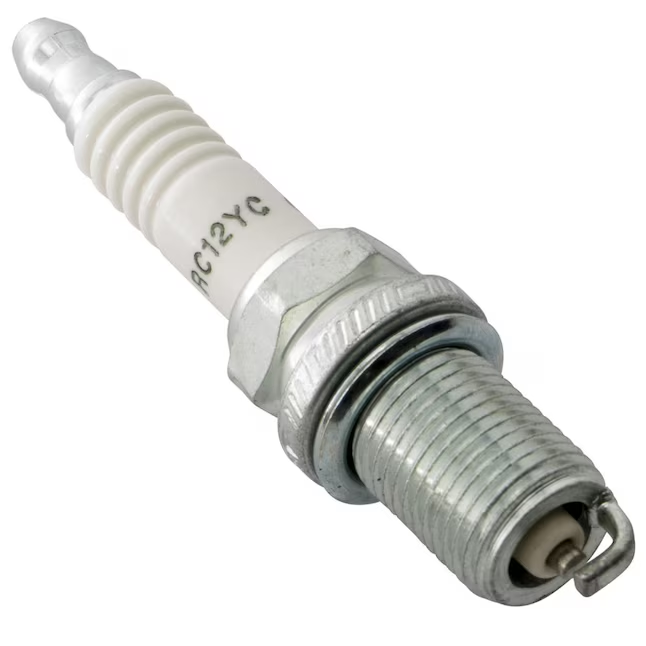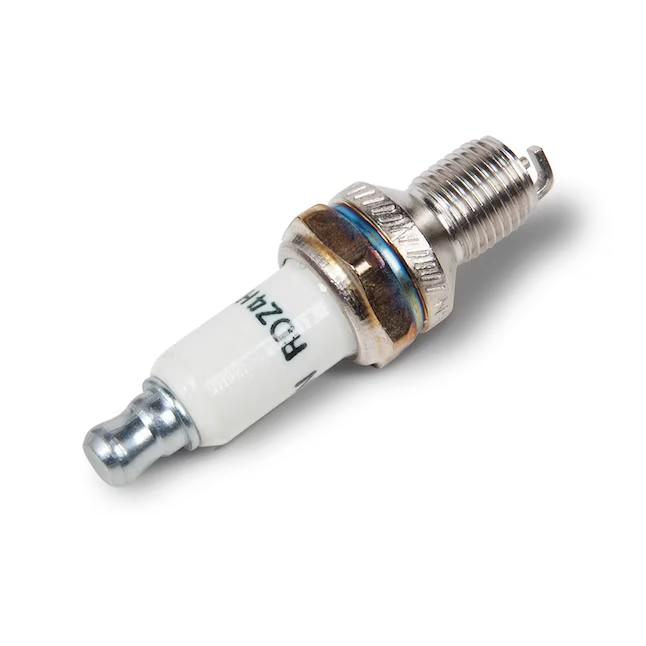Spark plugs are an essential component in gasoline-powered engines. These unassuming little devices play a critical role in the combustion process, creating the spark that ignites the air-fuel mixture within the engine cylinder. Understanding spark plug sizes is crucial for ensuring your engine runs smoothly and efficiently.
Why Spark Plug Size Matters
Spark plugs come in various sizes, and using the incorrect size for your engine can lead to a number of problems. Here’s why proper sizing is important:
- Thread Diameter: The spark plug’s threaded section screws into the cylinder head. If the diameter is too small, the plug won’t seal properly, leading to compression leaks and engine misfires. An excessively large diameter plug may not even screw in or could damage the threads in the cylinder head.
- Reach: This refers to the distance between the tip of the spark plug electrode and the sealing surface where the plug screws into the head. An incorrect reach can position the spark electrode too far away or too close to the air-fuel mixture, affecting ignition efficiency and potentially causing engine damage.
- Heat Range: Spark plugs have a designated heat range, which indicates their ability to dissipate heat. A plug with an improper heat range can run too hot or too cold, leading to pre-ignition, overheating, or poor performance.

Common Spark Plug Size Measurements
There are two main sizing factors for spark plugs: thread diameter and reach.
- Thread Diameter: Measured in millimeters (mm), the most common thread diameters for spark plugs are 10mm, 12mm, 14mm, and 16mm.
- Reach: Expressed in millimeters (mm) or inches (in), common spark plug reach lengths range from 12mm (0.47 in) to 20mm (0.79 in).
It’s important to note that thread diameter and reach are not interchangeable specifications. A spark plug can have a 14mm thread diameter and a 12mm reach, or a 16mm thread diameter and a 19mm reach, and so on.

Finding the Right Spark Plug Size for Your Engine
The best way to determine the correct spark plug size for your engine is to consult your vehicle’s owner’s manual. The manual will provide the exact specifications for the recommended spark plugs.
Here are some additional tips for finding the right spark plugs:
- Year, Make, and Model: Many online retailers and parts suppliers have search functions that allow you to enter your vehicle’s year, make, and model to find compatible spark plugs.
- VIN Lookups: Some websites offer spark plug recommendations based on your vehicle’s VIN (Vehicle Identification Number).
- Spark Plug Reference Charts: Spark plug manufacturers often publish reference charts that cross-reference their spark plugs with various vehicle applications.
Beyond Size: Other Spark Plug Considerations
While size is a crucial factor, there are other characteristics to consider when choosing spark plugs:
- Spark Plug Material: Spark plugs are typically made with copper or iridium electrodes. Iridium offers superior durability and a longer lifespan, while copper is more affordable but may need replacing more frequently.
- Number of Electrodes: Spark plugs can have single, double, or even triple electrodes. More electrodes can improve spark focus and performance, but they may not be suitable for all engines.
- Spark Gap: The spark gap is the distance between the center and ground electrodes. The correct gap is critical for proper ignition, and it can sometimes be adjusted slightly during installation.
What to do if the wrong spark plug size has been installed
If you suspect – or confirm – that the wrong size spark plug has been installed in your engine, here’s what to do:
Stop Driving: Continued use with an incorrect spark plug size can lead to further damage. It’s best to address the issue immediately to avoid costly repairs.
Identify the Problem:
- Consult the Owner’s Manual: Refer to your vehicle’s manual to find the recommended spark plug size specifications (thread diameter and reach).
- Compare the Installed Plugs: Carefully remove a spark plug (ensure the engine is cool!) and compare its size to the specifications in the manual. Thread diameter and reach markings are usually printed on the plug’s ceramic body.
Take Corrective Action:
- Purchase the Correct Plugs: Based on the information from the manual, buy a set of spark plugs with the recommended thread diameter and reach for your specific engine.
- Replace the Spark Plugs: If you’re comfortable doing so, follow a spark plug replacement guide specific to your vehicle. It’s crucial to use the correct tools, tighten the plugs to the specified torque, and replace one plug at a time to avoid mixing up the firing order.
- Seek Professional Help: If you’re unsure about any aspect of spark plug replacement, it’s best to enlist the help of a qualified mechanic. They can safely remove the incorrect plugs. Install the correct ones, and ensure everything is tightened properly.
Potential Additional Steps:
- Inspect for Damage: In some cases, using an incorrect size spark plug can damage the threads in the cylinder head. If you suspect this might be the case, a mechanic will need to assess the damage and determine if repairs are necessary.
- Clear Faulty Codes: If the incorrect spark plug size triggered a check engine light. A mechanic can use a diagnostic tool to clear the code once the issue is resolved.
By following these steps and addressing the improper spark plug size promptly, you can help prevent further problems and ensure your engine runs smoothly and efficiently. Remember, safety is paramount, so don’t hesitate to seek professional assistance if needed.

Your car sputters, hesitates, or throws a check engine light – frustrating! While many culprits can cause these issues, incorrect spark plug size can be a sneaky one. Here’s how improper sizing might manifest:
- Misfiring: The incorrect reach can position the spark too far or close to the air-fuel mixture, leading to inconsistent or missed ignitions, causing a jerky ride and power loss.
- Rough Idling: Engine vibrations increase if some cylinders misfire due to improper spark plug reach or diameter. You might feel a shaky idle and hear a rough engine sound.
- Reduced Fuel Economy: Incorrect spark plug size can affect the engine’s ability to burn fuel efficiently. This translates to lower gas mileage and potentially higher emissions.
- Hard Starts: If the spark plug can’t ignite the fuel mixture properly due to sizing issues, your engine might crank longer than usual before starting.
- Engine Knocking: Pre-ignition, caused by a plug running too hot (due to improper heat range related to size), can lead to a knocking sound from the engine. This is a serious issue and requires immediate attention.
Remember, these symptoms can also arise from other problems. However, if you’re experiencing them, checking your spark plug size against your owner’s manual or consulting a mechanic is a wise step towards a smooth-running engine.
Spark Plug Replacement Tips
Spark plugs are considered wear-and-tear items and should be replaced periodically according to your vehicle’s maintenance schedule. Here are some tips for successful spark plug replacement:
- Use the recommended tools: This typically includes a spark plug socket wrench and a gap gauge.
- Work on a cool engine: Spark plugs can seize when hot, making them difficult to remove.
- Replace one plug at a time: This helps prevent accidentally mixing up the firing order.
- Tighten to specification: Overtightening can damage the threads.
- Apply dielectric grease: A small amount of grease on the ceramic insulator helps prevent flashover.
By understanding spark plug sizes and considering other factors, you can ensure your engine receives the proper spark for optimal performance and longevity. If you’re unsure about any aspect of spark plug selection or replacement, consult a qualified mechanic for assistance.


